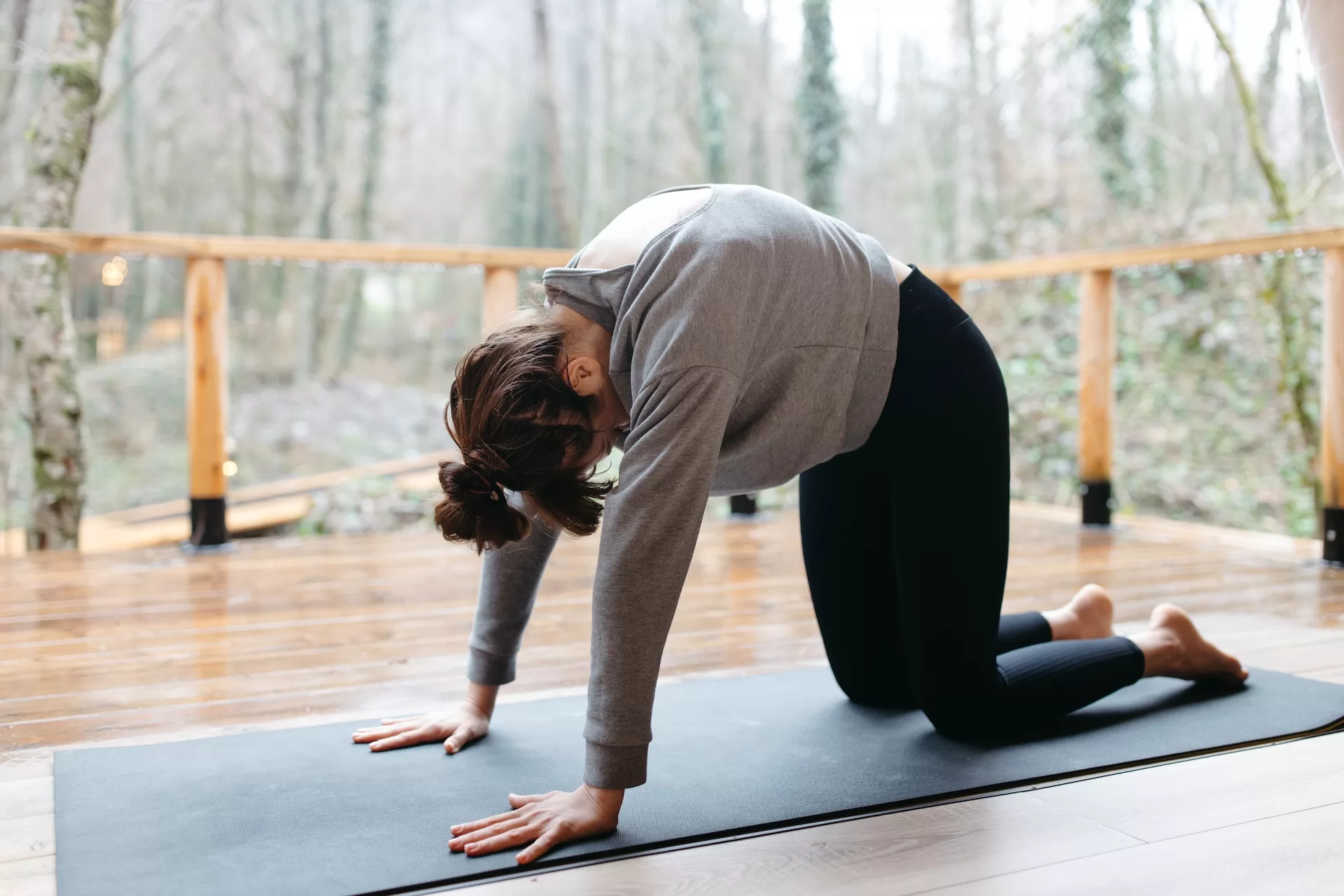In the world of yoga, Marjariasana, or Cat Pose, is considered a classic pose that is not only beneficial for improving flexibility but also for helping to clear the mind of negative thoughts and other distractions.
The following sections will discuss the pose and its variations, the alignment necessary for its safe and effective execution, as well as its potential benefits and contraindications. With this guide, we will also consider the underlying philosophy and principles of Cat Pose as they relate to yogic practice.
Overview of Cat Pose
Marjariasana (Cat Pose) is a fundamental asana that has been practiced since ancient times in India. Commonly referred to as Cat-Cow or Upward-Downward Cat Stretch, this classic pose is often one of the first poses introduced to those who are new to yoga.
As the name implies, Marjariasana (Cat Pose) is a pose that mimics the movements of a cat, and requires one to go from an arched back to a rounded back. When it is practiced correctly and with proper alignment, this pose can be therapeutic for your body and mind.
Variation of Cat Pose
Each practitioner has their own preference when it comes to variations of any given asana. The same is true for Marjariasana. While the traditional posture is fairly straightforward, there are modifications and variations of this pose that can be explored.
Extended Cat Pose: Extended Cat Pose is similar to Cat pose, however, the challenge here is to hold an arm and opposite leg in line with the torso. This variation allows for a more intense stretch in the shoulders and muscles of the outstretched leg.
Supine Cat Pose: There is a modification of Cat pose that can be done from a supine position. This variation helps to deepen the stretch to muscles of the spine, while simultaneously opening the chest and hips. While lying on your back, move between the arch and the round position.
Alignment Cues and Keys For Success
When practicing Marjariasana, it is important to ensure that the body is properly aligned in order to ensure safety and optimal benefit.
The positioning of the body and the act of moving between the arch and the round is the same in both the traditional standing and the sitting modified versions of Cat.
When in the arching Cat position, it is important that the neck is long and the chin is not tucked towards the chest. This will help you maintain proper alignment and avoid any neck injury.
Additionally, make sure that the elbows remain slightly bent and the arms straight, as the hands press into the floor and the head and body move up as a connected unit.
When practicing the rounded Cat position, engage the abdomen and press the shoulder blades together. The spine should not be flattened in this pose; rather, the tailbone should remain slightly elevated and the individual segments of the spine should move together in an “s” shape.
The arms and legs should also still remain engaged and active, pressing into the floor for added stability. As with any yoga pose, health and safety must come first. Before attempting this pose, take a moment to ensure that your body is properly warmed up and that you have a clear understanding of the alignment cues and the physical sensations you should be aiming for in Cat pose.
Potential Benefits and Contraindications
When practiced with proper alignment and attention to one’s body, Marjariasana has the potential to offer a variety of benefits both physical and mental. Physically, Cat pose has the potential to improve spinal flexibility while strengthening and toning the abdominal muscles.
This pose can also help to massage and stretch the muscles of the shoulders, neck, and chest, while simultaneously strengthening the hips and thighs.
Mentally, practicing Cat pose can provide the practitioner with the opportunity for a moment of deep introspection. By focusing on the act of moving with the breath, practitioners can release a variety of emotions, distractions, and stress that may be lurking in the body.
As with any asana, there are certain individuals for whom Cat Pose may not be appropriate. Those with history of knee, ankle, or spine injury should practice with caution and be sure to communicate with your yoga instructor to ensure proper understanding of the alignment cues.
Additionally, this posture is not recommended for individuals who suffer from lower back issues while pregnant or have high blood pressure.
Conclusion
Marjariasana (Cat Pose) is a fundamental yet powerful asana that has been practiced for centuries in the yogic tradition. It is a simple yet effective posture that is beneficial for improving spinal flexibility and strengthening the abdominal muscles, while providing practitioners with a moment of introspective meditation.
Marjariasana should always be undertaken with respect to one’s body and alignment cues, and the journey of yogic practice should always be undertaken with an open heart, mind, and spirit.

